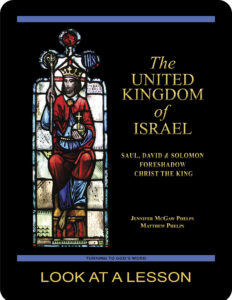Temple
 In the Gospel According to John 2:13–22 (NABRE), Jesus chases from the Temple area those conducting commerce there. He then is confronted by the Jewish leaders and asked for a sign. As seems typical in the Fourth Gospel, Jesus’ response only seems to aggravate the religious leaders more because they miss the point of what Jesus is saying.
In the Gospel According to John 2:13–22 (NABRE), Jesus chases from the Temple area those conducting commerce there. He then is confronted by the Jewish leaders and asked for a sign. As seems typical in the Fourth Gospel, Jesus’ response only seems to aggravate the religious leaders more because they miss the point of what Jesus is saying.
To help us understand Jesus’ point, it’s useful to know that the Greek in this passage contains two different words when talking about the Temple. The word ἱερόν (hieron) is used to describe the Temple area. This word is very closely related to the Greek word meaning “sacred” or “holy.” The Temple area here is designated as a sacred or a holy space. This designation explains why Jesus is so upset to find business being done there.
By contrast, when Jesus begins to talk about the destruction of the Temple and its restoration, he uses the word ναός (naos), a word that refers to the inner part of a shrine or a Temple. The Jewish Temple in particular was designed so that the Holy of Holies where God dwelt was in the innermost part of the Temple. This is the part Jesus is referring to, and as the text later tells us as readers, he really means himself. Jesus himself is where God dwells with humanity.
Where do we as Catholics still have sacred space? What makes the space sacred? How do we set this space apart as sacred to God?
related topics: consecration; holy; sacred; synagogue
you also may like our study of Saul, David & Solomon
 The United Kingdom of Israel: Saul, David & Solomon Foreshadow Christ the King, a 28-lesson Catholic Bible study with an imprimatur, provides an in-depth look at the First and Second Books of Samuel to learn how the lives of the monarchs Saul, David, and Solomon point ahead to the kingdom of heaven. The unified reign of King David is seen as a foreshadowing or type of the unity that is one of the four marks of the Church—the kingdom of God—established by Jesus Christ. Click on the book’s cover to view a sample lesson.
The United Kingdom of Israel: Saul, David & Solomon Foreshadow Christ the King, a 28-lesson Catholic Bible study with an imprimatur, provides an in-depth look at the First and Second Books of Samuel to learn how the lives of the monarchs Saul, David, and Solomon point ahead to the kingdom of heaven. The unified reign of King David is seen as a foreshadowing or type of the unity that is one of the four marks of the Church—the kingdom of God—established by Jesus Christ. Click on the book’s cover to view a sample lesson.
 Click on the picture of the statue of Moses with horns (above) to learn more about Lost in Translation. A new entry is archived each Monday. Contact us to receive Lost in Translation by email every week. You may use any of the contact links on our website to ask Matthew a question.
Click on the picture of the statue of Moses with horns (above) to learn more about Lost in Translation. A new entry is archived each Monday. Contact us to receive Lost in Translation by email every week. You may use any of the contact links on our website to ask Matthew a question.
